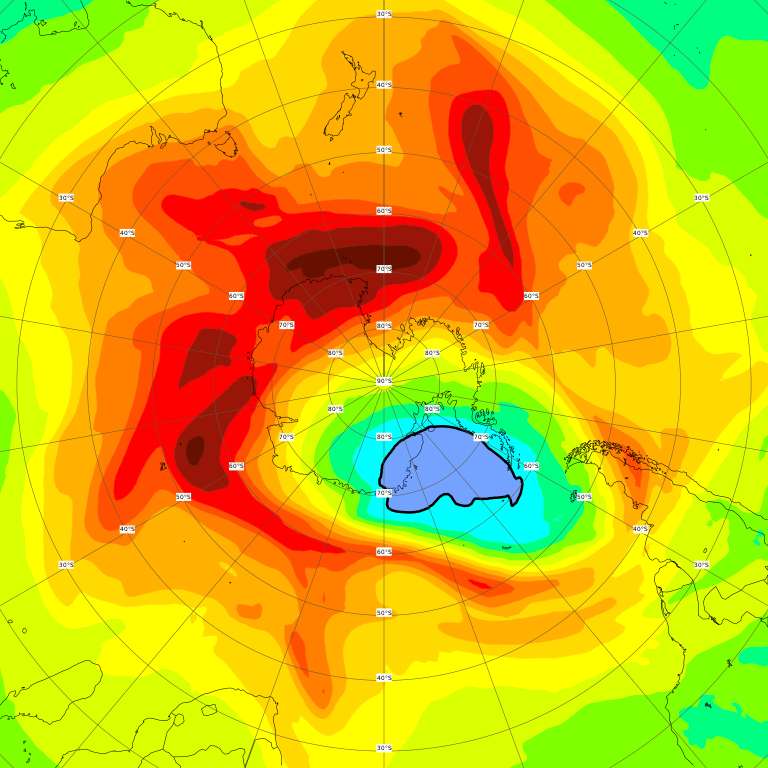
It’s official; the ozone layer over the Antarctic is the smallest its been in decades. At this rate of recovery, the United Nation’s environmental agency has declared that most parts of the ozone layer will be completely healed within our lifetime.
Since 2000, parts of the ozone layer have recovered at a rate of 1 to 3 percent every 10 years, according to the latest Scientific Assessment of Ozone Depletion. Meaning, by 2050, both the Northern and Southern hemisphere mid-latitude ozone will be completely healed. The Ozone layer, for those who don’t know, is a layer in the earth’s stratosphere at an altitude of about 10 km (6.2 miles) containing a high concentration of ozone, which absorbs most of the ultraviolet radiation reaching the earth from the sun.

Forecast of how the ozone hole is likely to evolve over mid-September 2019.
“Our forecasts show it will remain small this week and we expect that this year’s ozone hole will be one of the smallest holes that we’ve seen since the mid-1980s,” Antje Inness, a Senior Scientist at CAMS, said.
Back in 1987, 196 countries and the European Union signed the Montreal Protocol, an agreement phase out the production of nearly 100 substances that are responsible for ozone destruction. Showing that after the ozone hole was first discovered in 1985; the world acted quickly to resolve the problem.
“The Montreal Protocol has been such a success because of unanimous global support,” UN Secretary-General, António Guterres said in a UN statement.
“We should remember that the Montreal Protocol is both an inspirational example of how humanity is capable of cooperating to address a global challenge and a key instrument for tackling today’s climate crisis.”





